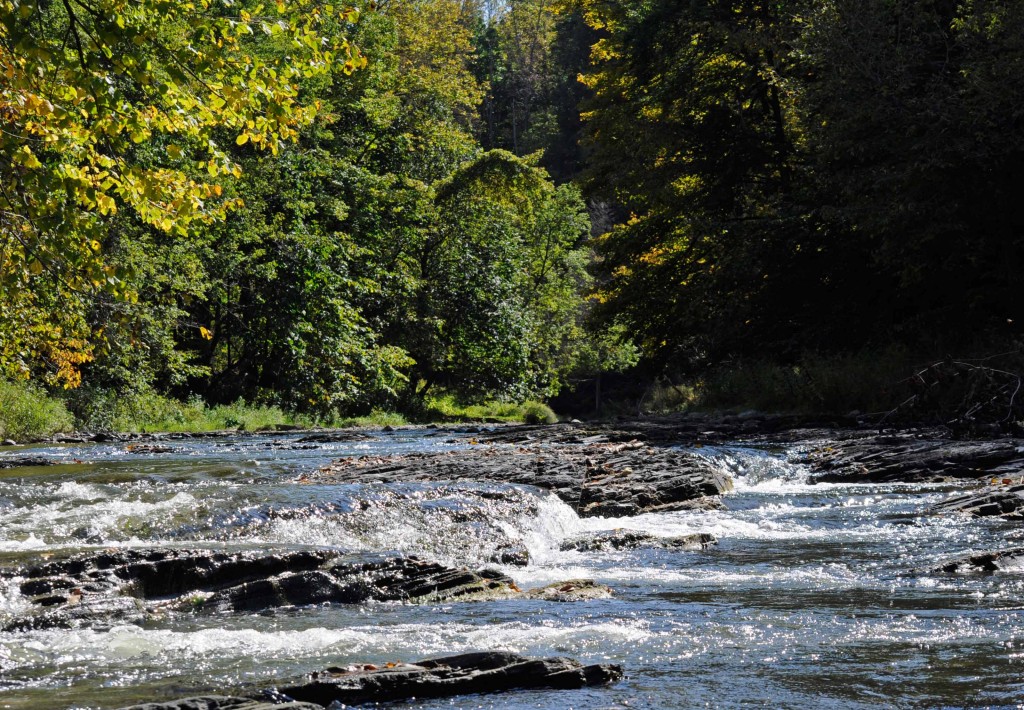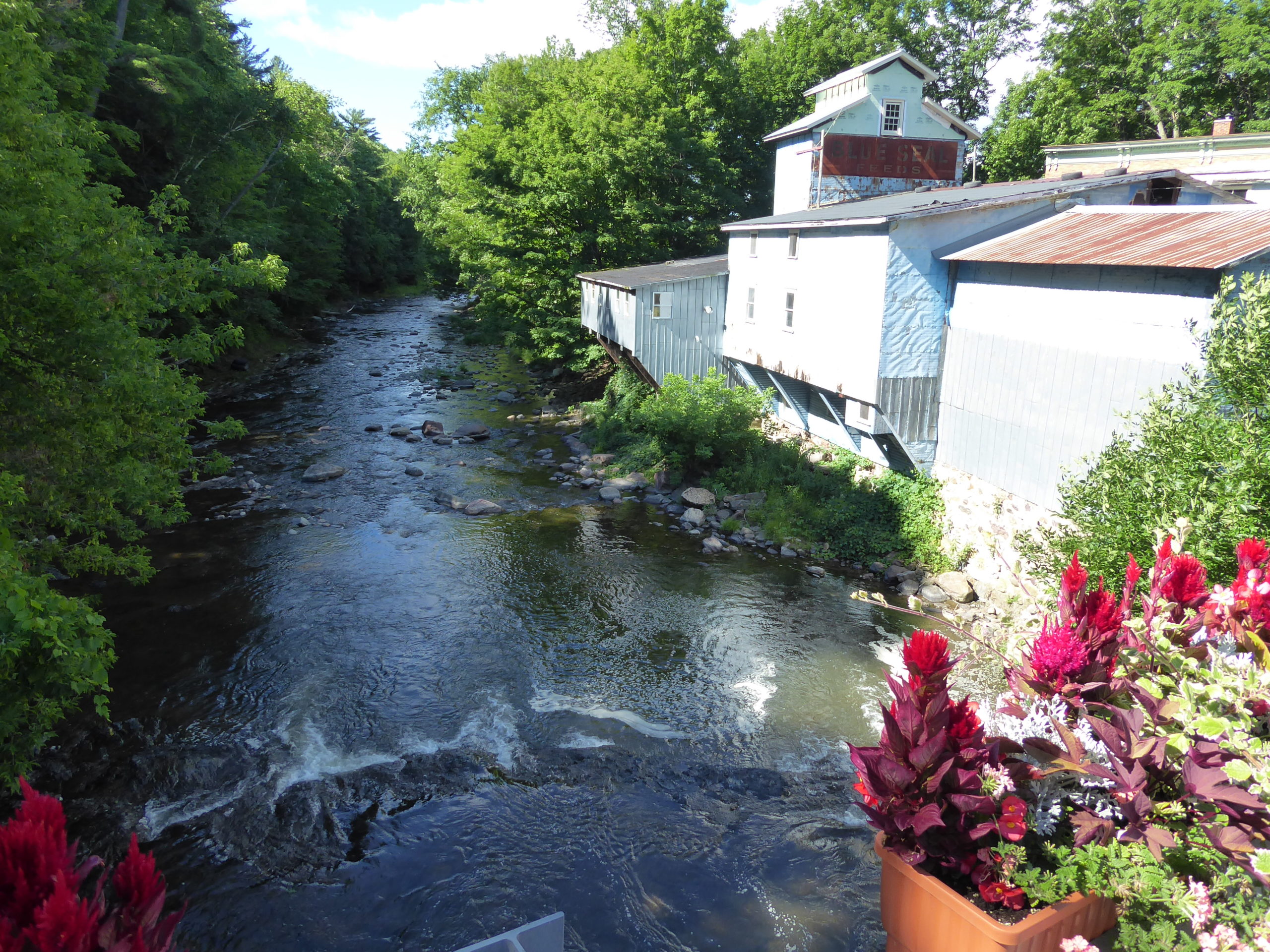Running down and through a wide variety of public and private forests and agricultural land in two counties, Lewis Creek is a diminutive but precious resource. Although several sites on the Creek tend to meet VT water standards, during low-flow summer months, E.coli and turbidity levels can run high.
The Addison County River Watch Collaborative has been monitoring water quality in the Lewis Creek since 1992. For the 2012 and 2013 seasons, Lewis Creek was the subject of a more intensive monitoring focus, where rotational as well as sentinel stations were monitored and additional parameters were tested.
Despite its magnificently clear appearance on sunlit spring and summer days, with flashes of movement indicating brook trout in its shallows, Lewis Creek has its acute problems. The creek is listed by the State of Vermont as impaired for contact recreation from about twenty miles from its mouth (in the village of Starksboro near Route 116) down to the Spear Street covered bridge in Charlotte near Mt. Philo, a result of high E. coli counts and agricultural runoff. Pathogen readings have trended highest at the Tyler Bridge sampling station in Starksboro, just before the creek flows into Hinesburg. Not far downstream from that sampling station, Pond Brook runs into Lewis Creek, carrying its own load of pollutants, mostly phosphorus and sediments (see separate article on Pond Brook).
Total phosphorus concentrations increase steadily downstream mirroring turbidity levels, indicating that erosion is the primary source of phosphorus in Lewis Creek. Phosphorus concentrations reach high levels at times, and the jump in the concentrations below Pond Brook reflects a jump in the suspended sediment.



